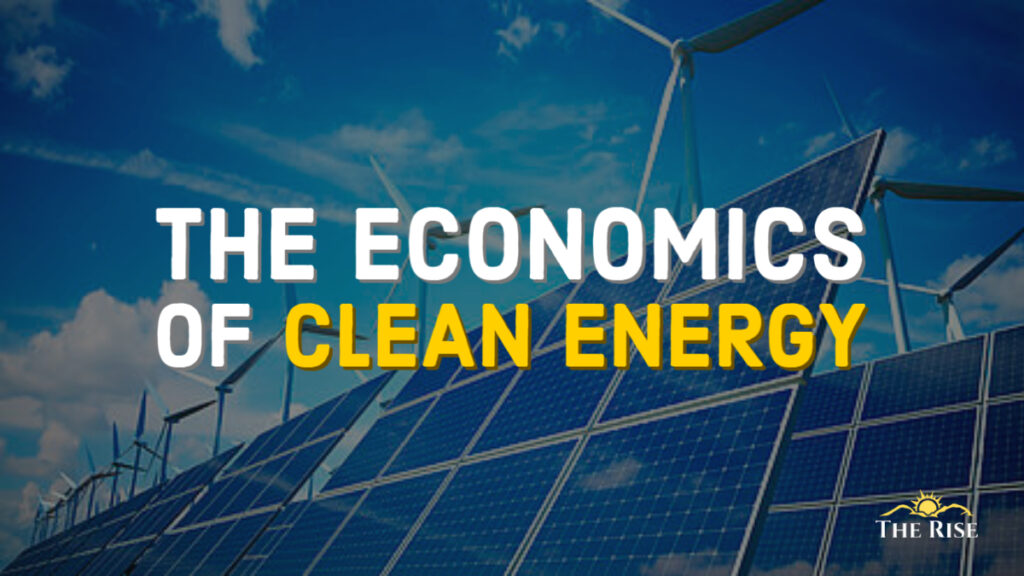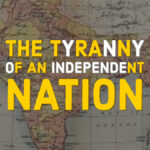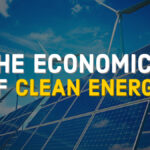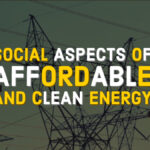Few years down the line, we may see India minimising its dependency on oil for energy purposes. Energy security remains a big issue giving nightmares to Indian policymakers. With the government pushing forward several initiatives to increase dependency on renewable and clean energy, our TRIP intern Devashish Saurav analysed the impact of clean and affordable energy on India through different socio-politico-economic angles. This article is an outcome of the internship.
For the sustainable development and security of any country, energy is an important factor. The demand for energy has grown considerably in the past few decades. The economic competitiveness, enhanced lifestyle, growing population and production improvements are primary reasons for high energy demand. From 1971 to 2014 the energy usage has increased by 44% (World Bank, 2017a, 2017b).
A sense of energy insecurity continuously prevails upon countries that are dependent upon fossil fuels and import it. Around 71.5% of the total oil reserve is held by the Organization of the Petroleum Exporting Countries (OPEC) while the rest of the countries depend upon producing states (BP,2017).
A ‘Green’ Energy Security Plan
One-third of the total energy consumption is oil – the most consumed fuel of the planet. To maintain the development rate and economic prosperity a long term energy security is necessary. However, in the case of conventional fossil fuels, a continuous sense of insecurity revolves around the importing countries because of the volatile market and situation prevailing in the exporting countries. A small disruption in the demand and supply balance of energy generates heavy economic ripples all across the world. So, to ensure stability and energy assurance, it is high time that India should decrease the dependency on fossil fuels and invest heavily towards available renewable and clean energy sources.
To maintain its economic growth and cater to the needs of its increasing population, India should keep clean energy at the core of its energy security plan.
For the material welfare of humanity access to clean and affordable energy is indispensable. The consequence of energy poverty is multidimensional in nature (Pereira et al. 2011 and Day et al. 2016). A country or society having scarcity of energy resources will face challenges like ill-health, poverty, gender discrimination and illiteracy (Sovacool, 2013 and Groh, 2014). In fact, the availability of secure, clean, modern and affordable energy for citizens is one of the central elements to economic growth and poverty reduction, as also mentioned in IEA (2017).
An Engine for Employment and Growth
Clean energy holds economic benefits at both micro and macro levels. As per the report of the International Renewable Energy Agency (IRENA), if the current share of renewable energy is doubled in the global energy mix then the Global GDP will increase by $1.3 trillion (approx.) by 2030 i.e 1.1% increase. Being a source abundant country with availability of solar and wind energy, India also holds a golden chance to grow and prosper in this field.
Around 10 million people across the world are engaged in the renewable energy sector. Around 20% of the 500,000 ‘green’ jobs created globally in the year 2017 was contributed by India. Presently, India is going through an economic crisis and millions of youth are unemployed. This situation is aggravated further with the onset of COVID-19 pandemic. It is, indeed, imperative for India to use the opportunities available in clean energy sectors for creating jobs, increasing the present positions in installation, manufacturing, sales, marketing, engineering and more.
The clean energy sector has an additional advantage – it holds the capacity to enhance the economic capacity of both skilled and unskilled masses, rural and urban masses etc. For example, the installation of wind turbines or solar photovoltaic plants in rural areas, provide an opportunity for landowners to offer their land on lease and generate continuous income from it along with simultaneously supporting the ‘green’ movement. However, the presence of middlemen, non-progressive policies and poor security arrangements hinder India from entering this ‘green’ pasture.
Also Read: Post-Corona Recovery through Employment Generation in Forestry
Climate Change-led Economic Loss
A recent report of the Universal Ecological Fund claims that around $240 billion per year is the cost of climate change in the U.S. economy. The Fourth National Climate Assessment found that around 10% contraction of the U.S. economy is expected if climate change continues in the same way. These economic losses are evident and India will not be an exception! Melting of glaciers and direct impact on coastal areas will make India more prone to it because of its geography. Thus, India needs to think about reducing the pollution, mitigating extreme weather events, sea level rise etc. as it will help them in reducing the climate change-associated-economic loss as well.
The availability of secure, clean, modern and affordable energy for citizens is one of the central elements to economic growth and poverty reduction.
Switching from conventional forms of energy towards clean energy could contribute in slowing down climate change thus avoiding the potential loss to the economy. So, we need to invest more in the clean energy sector because it has major benefits for human health and economic stability. We need to keep in mind that clean energy technologies are labour-intensive so they create more jobs than conventional energy sources. Also, the clean energy technologies offer more scope for the primary use of locally available resources. Thus, it helps in keeping the benefits of investment at home.
Being a developing country, India should assure that the initial cost factor of clean energy technologies should not be a burden for the masses, because it is the high initial investment which deters people from shifting to clean energy.
In fact, clean energy usage is more beneficial for the underprivileged masses as they hardly have any option to mitigate the harmful impact of conventional energy sources. The climate change-related issues impact the poor the most. Thus, clean and affordable energy is the necessity of time. Owing to the availability of clean energy sources, India can emerge as an exporter of energy in near future, provided the policies are made conducive for the clean energy growth. It will also help in making India self-sufficient in many senses.
References:
- World Bank, 2017a. Global financial development database. Retrieved from. https://data. worldbank.org/data-catalog/global-financial-development.
- BP, 2017. Statistical review of world energy: June 2017. London, United Kingdom. Retrieved from. https://www.bp.com/content/dam/bp/en/corporate/pdf/energy-economics/statistical-review-2017/bp-statistical-review-of-world-energy-2017-full-report.pdf.
- Pereira, M. G., Freitas, M. A. V. and da Silva, N. F. (2011). The challenge of energy poverty: Brazilian case study. Energy Policy, 39, pp. 167–175.
- Day, R., Walker, G. and Simcock, N. (2016). Conceptualising energy use and energy poverty using a capabilities framework. Energy Policy, 93, pp. 255–264.
- Sovacool, B. K. (2013). Confronting energy poverty behind the bamboo curtain: a review of challenges and solutions for Myanmar (Burma). Energy for Sustainable Development, 17, pp. 305–314.
- Groh, S. (2014). The role of energy in development processes- The energy poverty penalty: Case study of Arequipa (Peru). Energy for Sustainable Development, 18, pp. 83– 99.
- IEA (2017). Energy access outlook 2017: From poverty to prosperity, World energy outlook special report, www.iea.org.
















Pingback: Branding A Profitable Business Craft - TheRise.co.in
Pingback: Introspecting Digitalization in the Indian Economy - TheRise.co.in
Pingback: Inflationary Petroleum Prices in India- TheRise.co.in
Pingback: Ravaged by COVID-19, Ruined by fluctuating petroleum prices: Economy
Pingback: A Tax-Free Economy to Tackle the Menace of Black Money? - TheRise.co.in